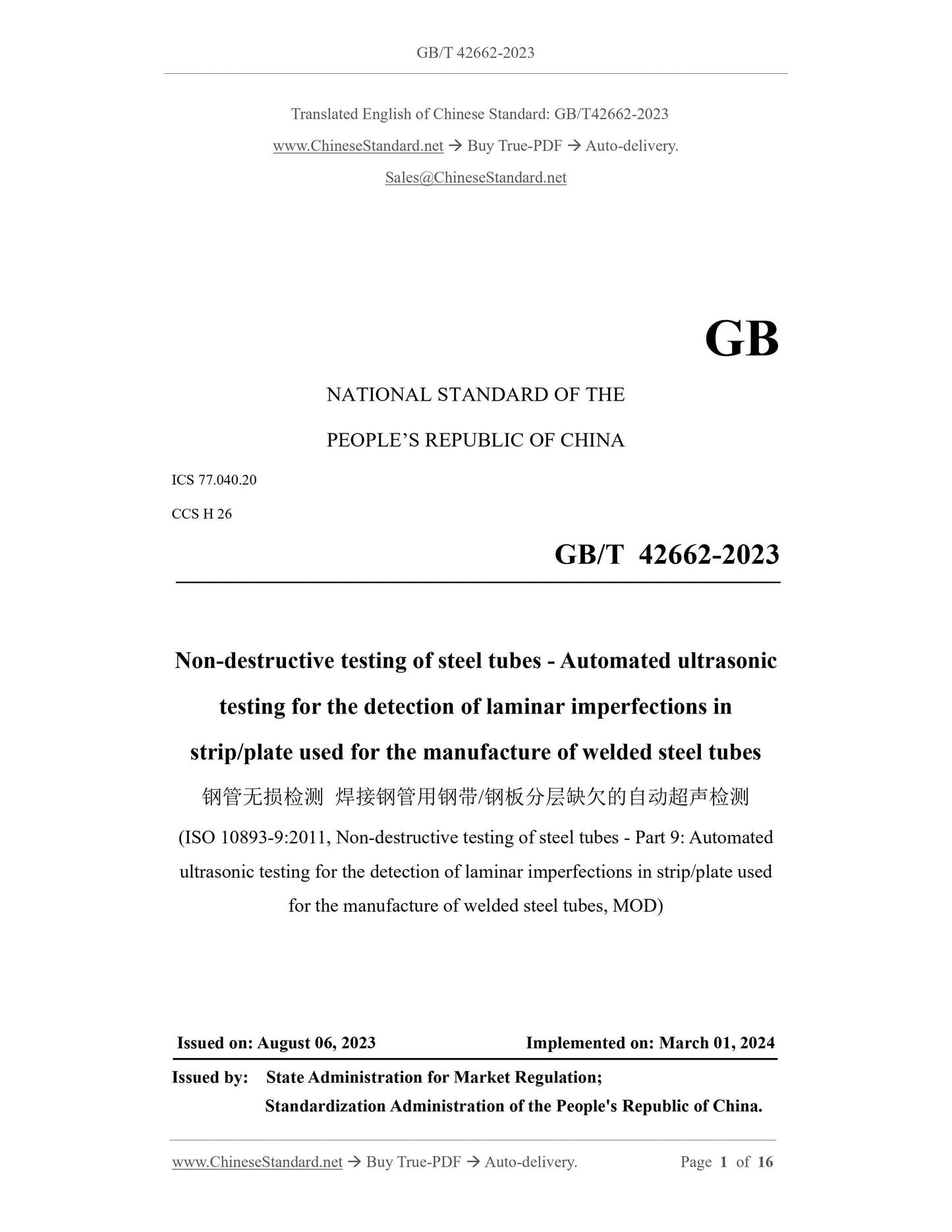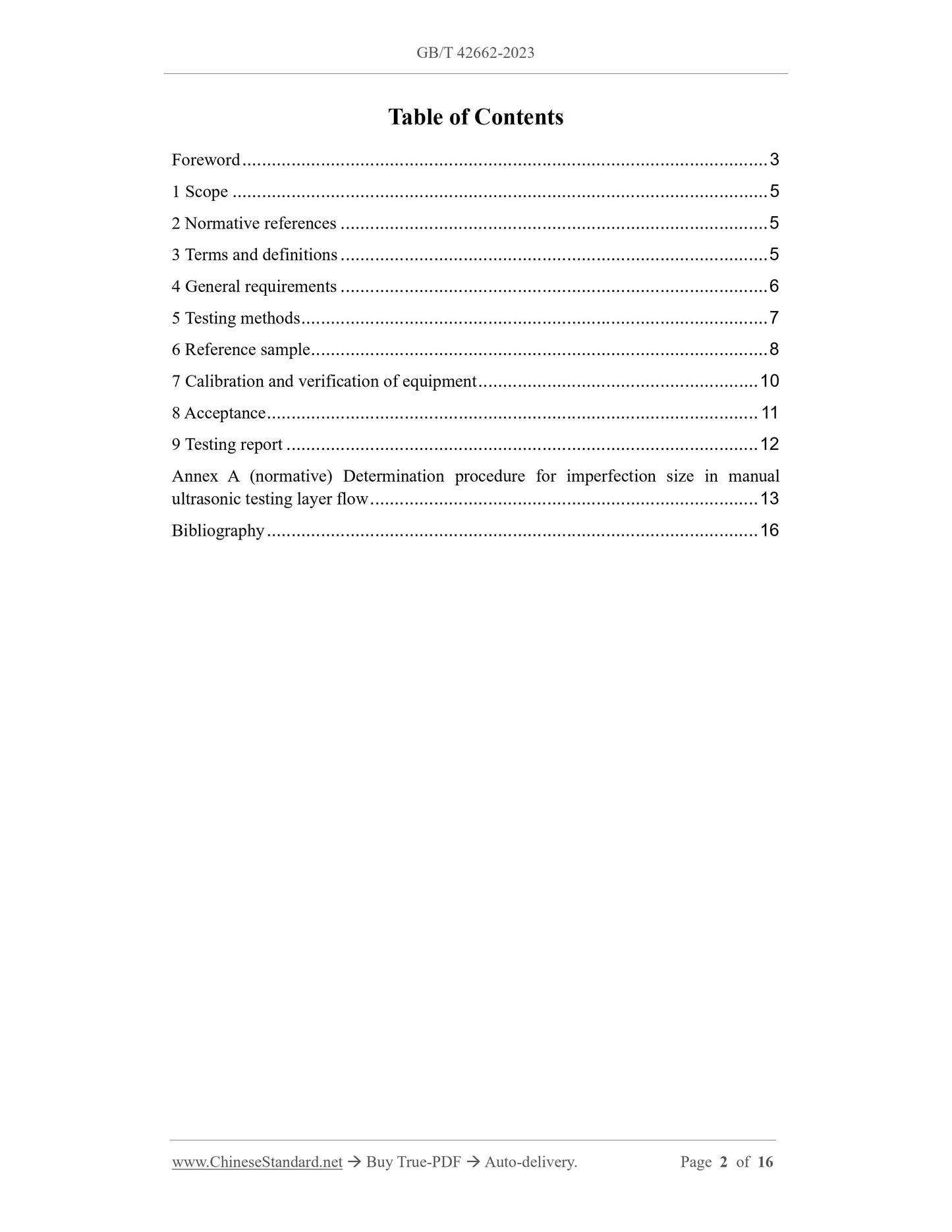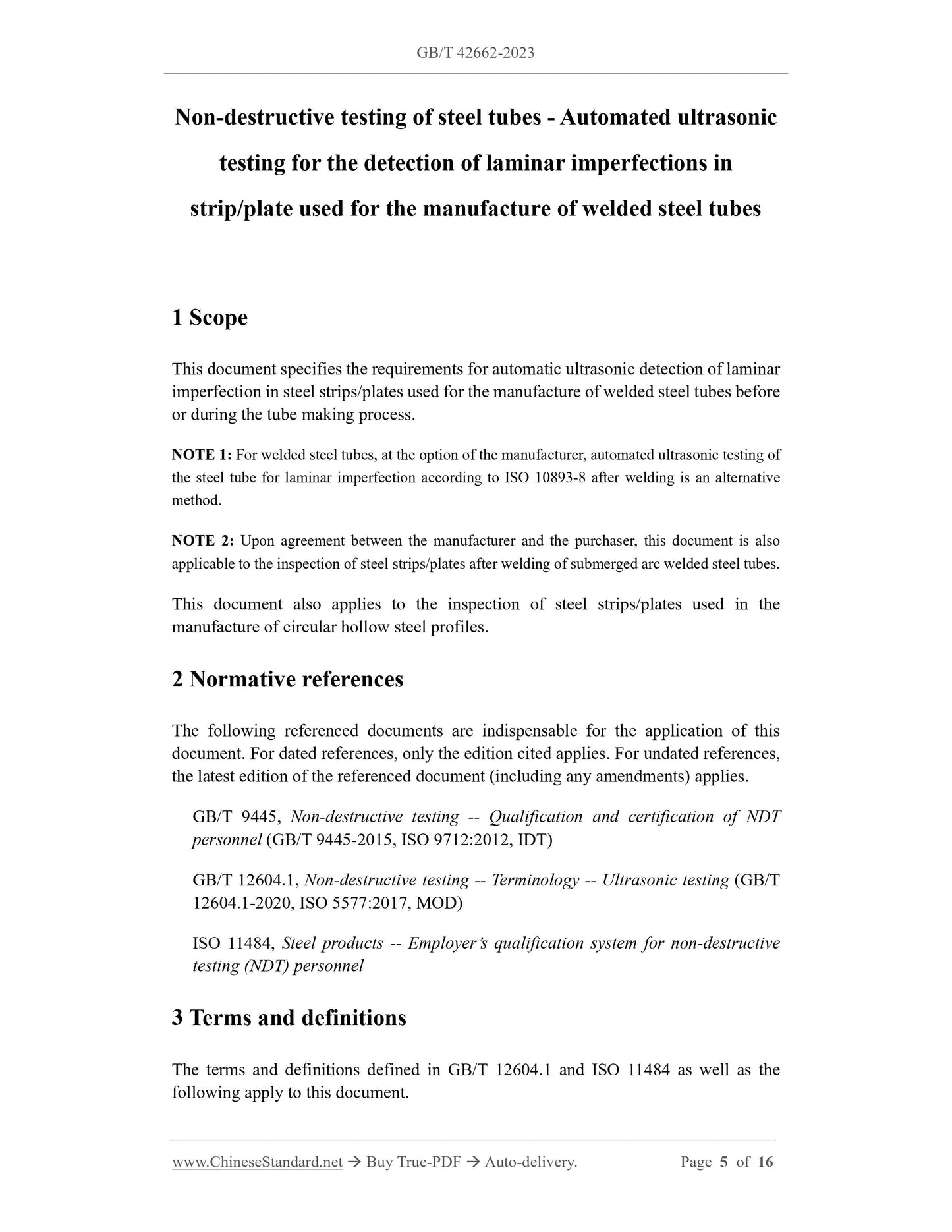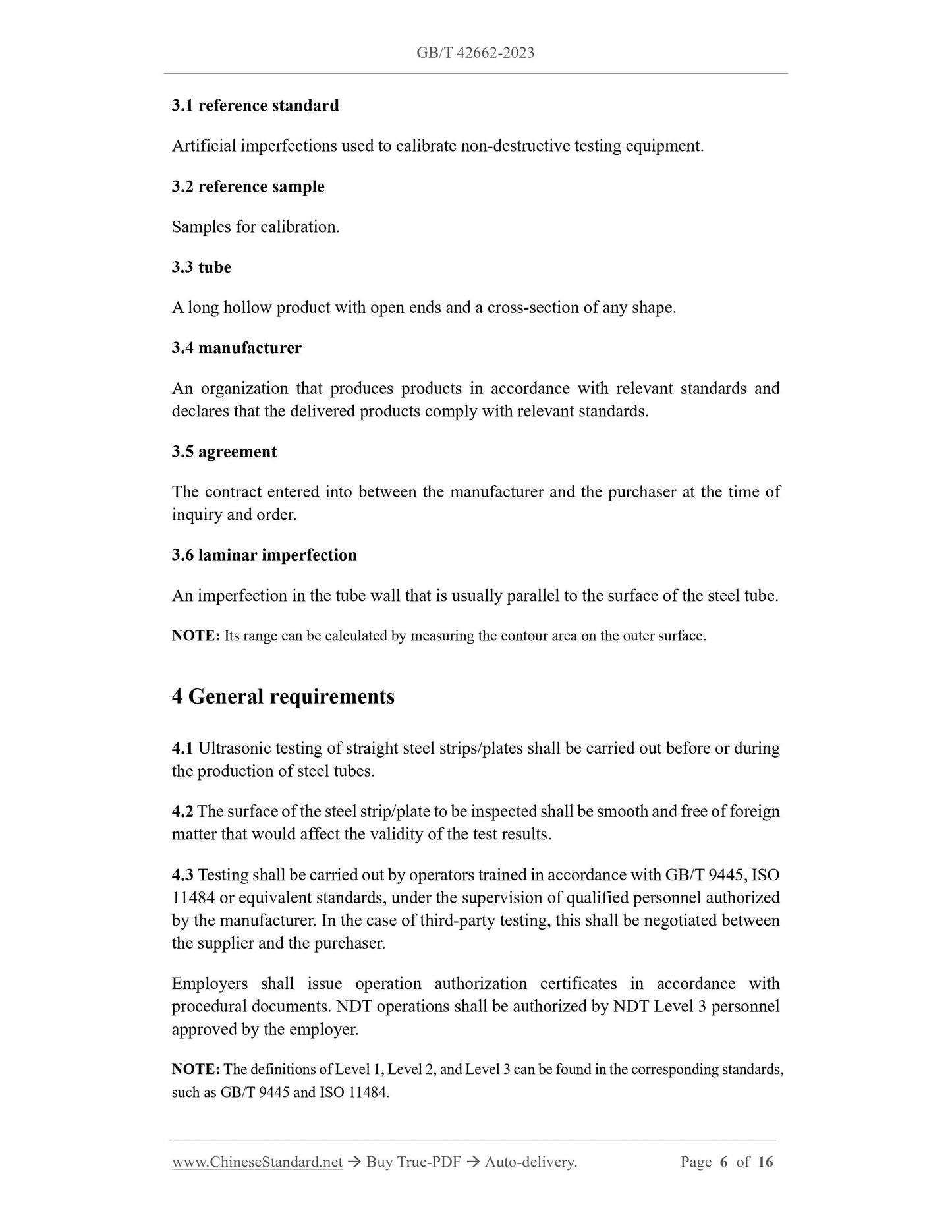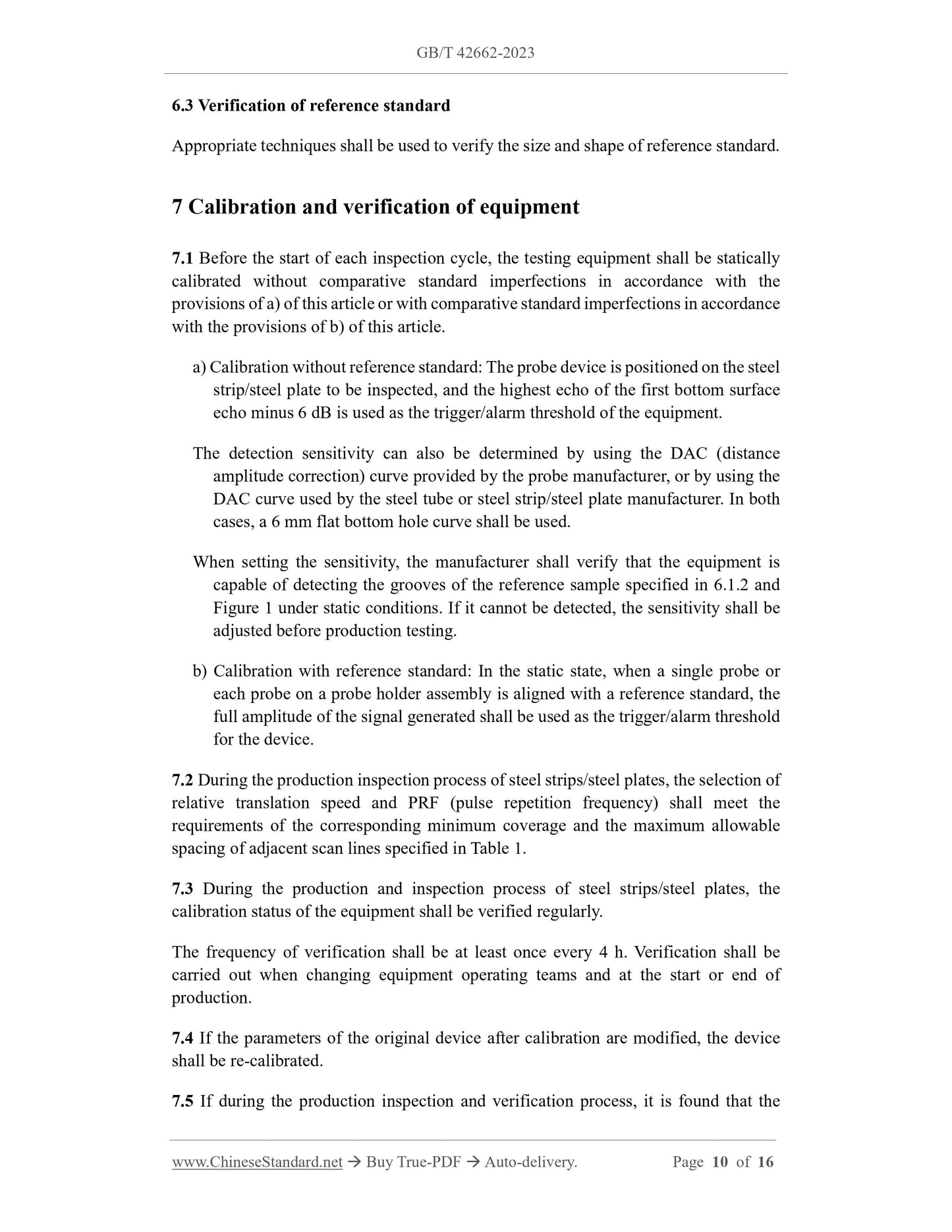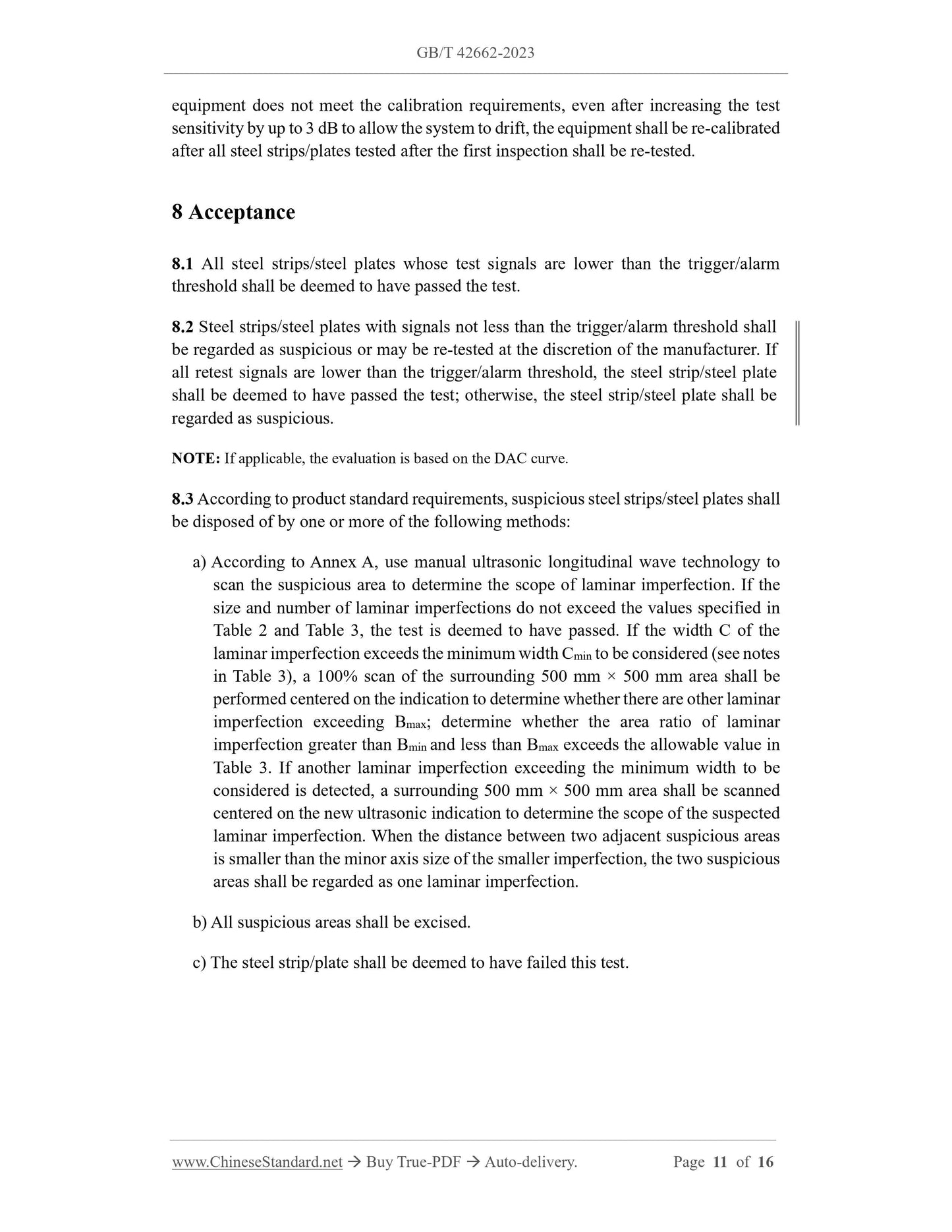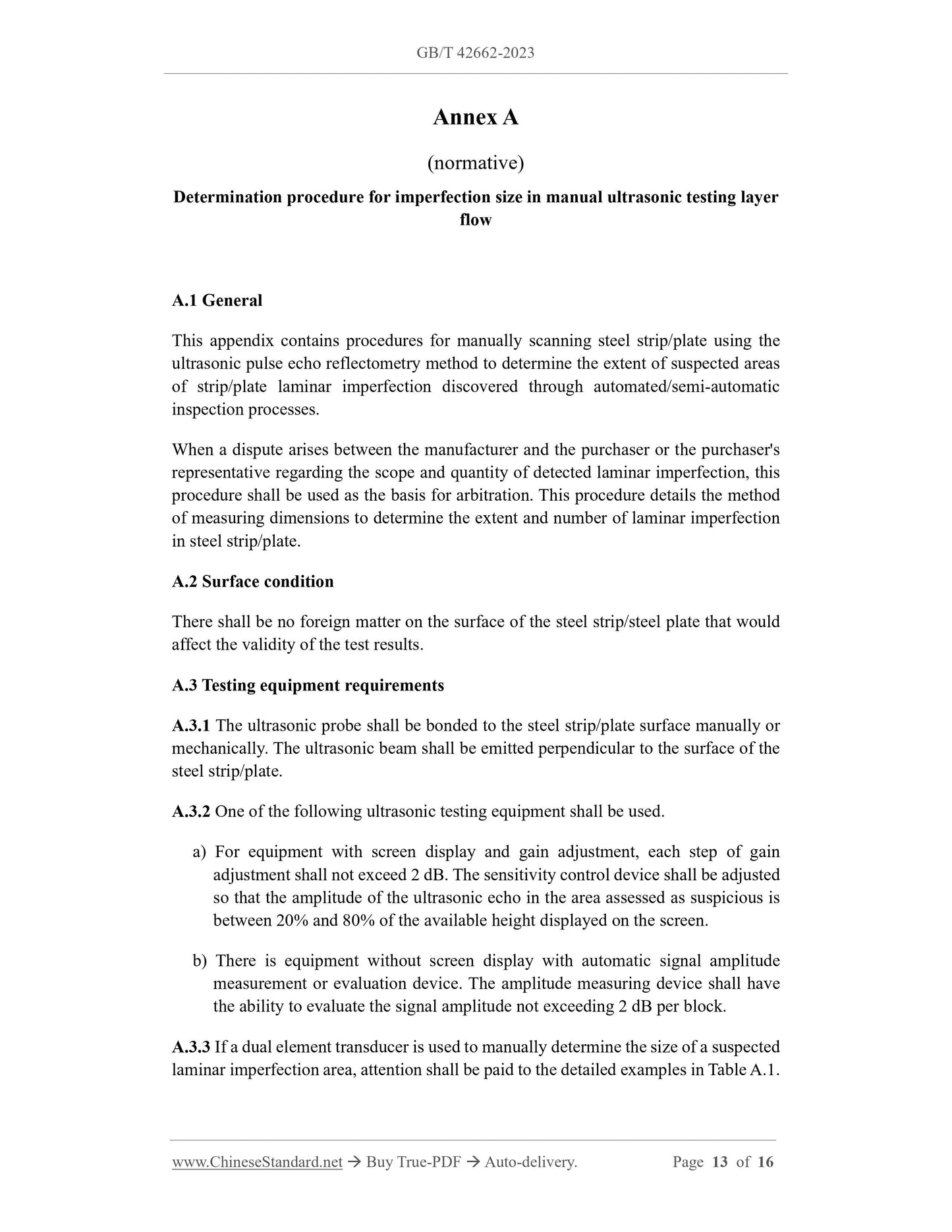1
/
of
7
www.ChineseStandard.us -- Field Test Asia Pte. Ltd.
GB/T 42662-2023 English PDF (GB/T42662-2023)
GB/T 42662-2023 English PDF (GB/T42662-2023)
Regular price
$230.00
Regular price
Sale price
$230.00
Unit price
/
per
Shipping calculated at checkout.
Couldn't load pickup availability
GB/T 42662-2023: Non-destructive testing of steel tubes - Automated ultrasonic testing for the detection of laminar imperfections in strip/plate used for the manufacture of welded steel tubes
Delivery: 9 seconds. Download (and Email) true-PDF + Invoice.Get Quotation: Click GB/T 42662-2023 (Self-service in 1-minute)
Newer / historical versions: GB/T 42662-2023
Preview True-PDF
Scope
This document specifies the requirements for automatic ultrasonic detection of laminarimperfection in steel strips/plates used for the manufacture of welded steel tubes before
or during the tube making process.
NOTE 1: For welded steel tubes, at the option of the manufacturer, automated ultrasonic testing of
the steel tube for laminar imperfection according to ISO 10893-8 after welding is an alternative
method.
NOTE 2: Upon agreement between the manufacturer and the purchaser, this document is also
applicable to the inspection of steel strips/plates after welding of submerged arc welded steel tubes.
This document also applies to the inspection of steel strips/plates used in the
manufacture of circular hollow steel profiles.
Basic Data
| Standard ID | GB/T 42662-2023 (GB/T42662-2023) |
| Description (Translated English) | Non-destructive testing of steel tubes - Automated ultrasonic testing for the detection of laminar imperfections in strip/plate used for the manufacture of welded steel tubes |
| Sector / Industry | National Standard (Recommended) |
| Classification of Chinese Standard | H26 |
| Classification of International Standard | 77.040.20 |
| Word Count Estimation | 14,151 |
| Date of Issue | 2023-08-06 |
| Date of Implementation | 2024-03-01 |
| Issuing agency(ies) | State Administration for Market Regulation, China National Standardization Administration |
Share
